The Lilies are Lovely and the Spiders are Amorous...
 Sunday, October 10, 2010 at 11:37AM
Sunday, October 10, 2010 at 11:37AM These days people pop in for tea at Kulafumbi in any number of ways. Yesterday, one of our friends and two colleagues from the Kenya Wildlife Service stopped by our beach and came up to the house for tea, on their way back from counting rhinos in Tsavo East…
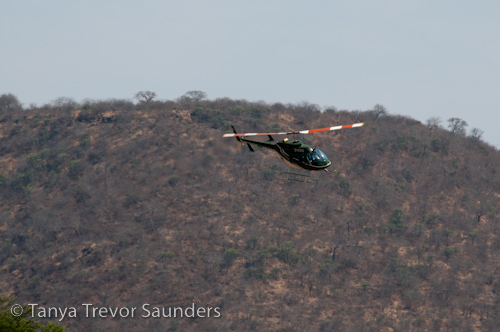
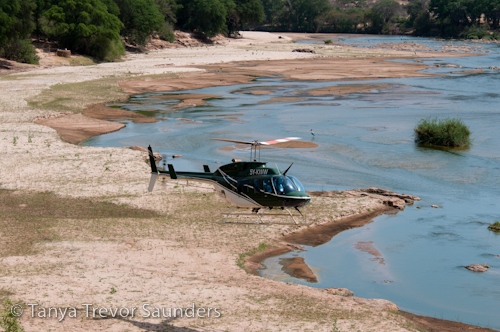
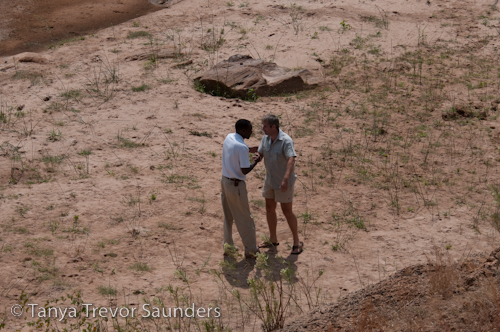
Kulafumbi in the dry season is the most beautiful place on earth (or one of them, at least). It vibrates with life in quite a different way to when it is pounding with life during the rains. There is so much activity on the river, with antelope of all shapes and sizes coming down to drink throughout the day, elephants in the evening trumpeting and tearing at the reeds, hippos honking and – today for the first time – big herds of buffalo coming in to drink in the morning.
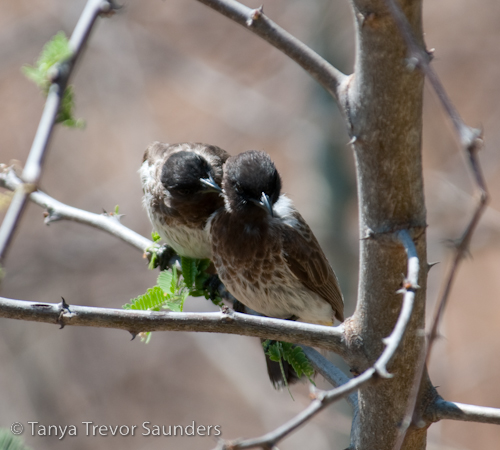
But it does seem the rains are on their way again. The bulbuls are courting (above), the starlings are courting, the plovers are courting (mind you, they always do), the frogs are squawking, a few scorpions are turning up downstairs, and even the spiders are getting amorous. I found this spider’s nest in our bathroom this morning. The white nest is very difficult to see against the white wall, but I hope you can make it out:
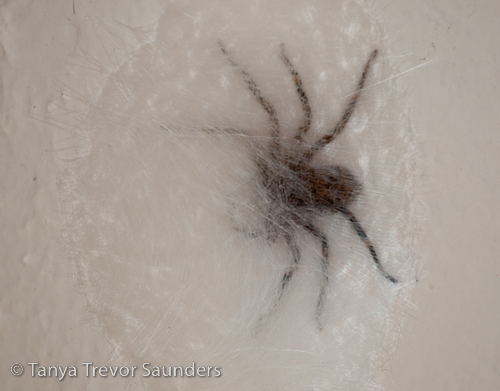
Most telling of all is our Fireball Lily on the balcony. Normally this wild flower is the most accurate harbinger of imminent rain. Usually, it flowers precisely ten days before the rain (although this time, it has to be said that it is a little out of sync, as ten days have passed since it first emerged on 27th September). It was still in full and fabulous bloom on 6th October, but is now waning. It’s an interesting plant, because the flower comes up on that luscious green stalk before the leaves emerge from the ground. They will come later, in great abundance once the flower is gone.
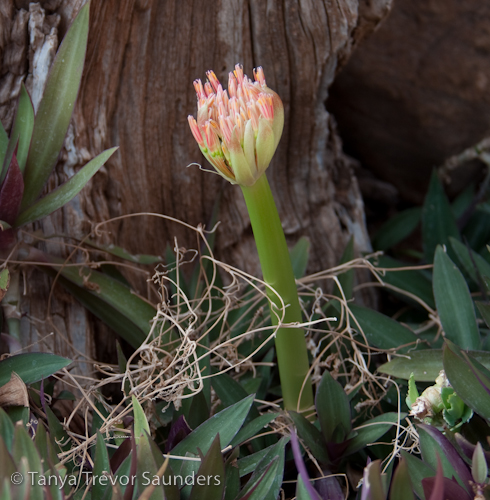 27th September - just emerging...
27th September - just emerging...
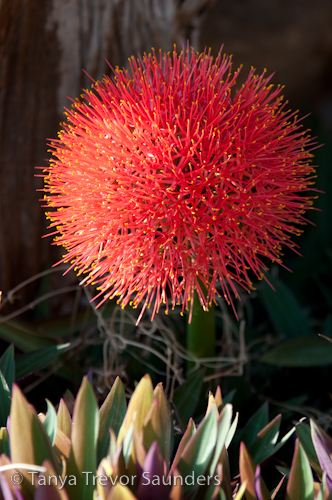 6th October - in full bloom
6th October - in full bloom
The crocodiles have obviously been breeding apace. This stretch of river has always been known as a crocodile breeding ground, but since we have owned and protected the riverbank for the last 17 years, the peace and quiet here has allowed them to breed even more successfully. Look at this small crocodile and the tiny one in front of it:
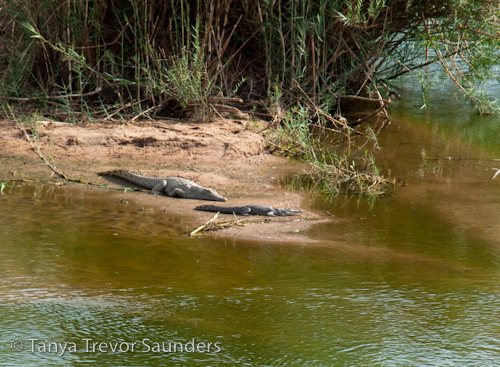
Many of the European migrant birds are returning, including our dear little Lesser Striped Swallows. The first of the Black Storks arrived on the river this morning too. It is always so special to see these rare, shy birds choose the tranquility of our stretch of river to spend their winters.
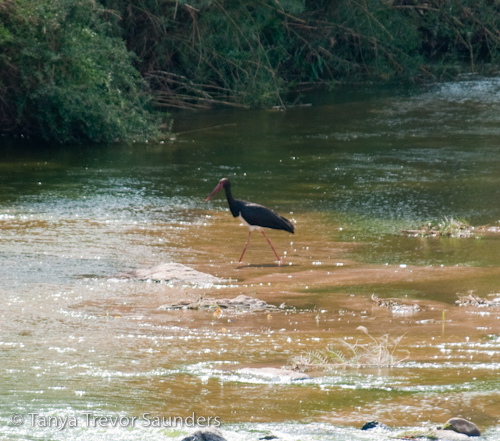
The Carmine Bee-eaters (inter African migrants) arrived this morning too:
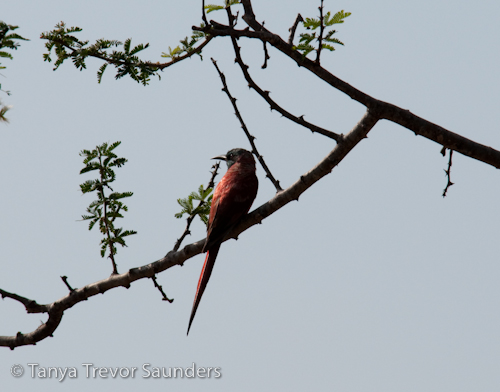
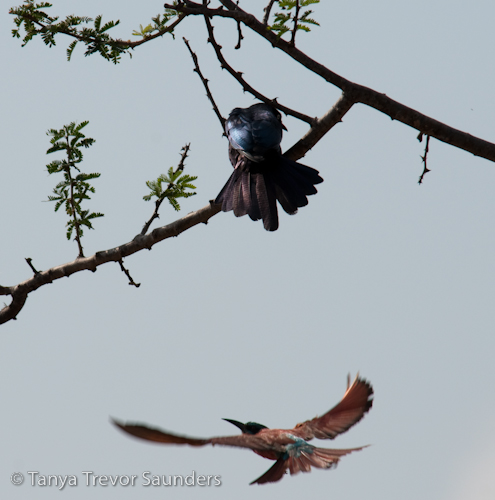
As for the our resident glossy starlings, they remain the same: beautiful to a fault but bullies beyond compare, even chasing the harmless Carmine Bee-eater off its perch (above), for no good reason at all.
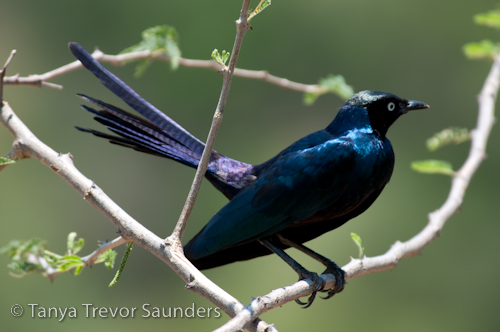 The most beautiful of bullies!
The most beautiful of bullies!
While the Goliath Heron is not a migrant, it does not always choose to spend its days on this stretch of river…but it turned up again a few days ago and seems to be happily ensconced for the time being. It’s always nice to see an old friend back in the vicinity. Not to be outdone, the Yellow-billed Storks are back in front of the house too. They’ve been hanging around upstream at Hippo Bend for quite a while, but seem to be favouring the stretch of river below our house now.
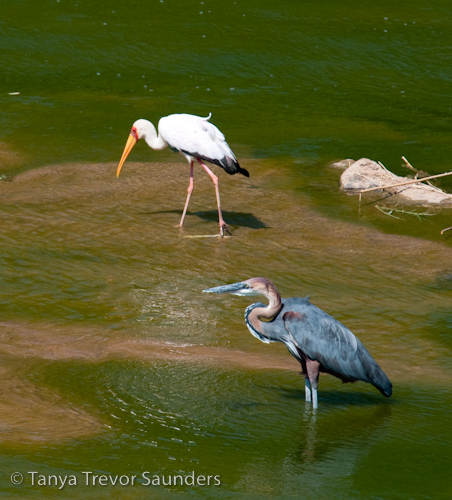
One Yellow-billed Stork has taken to lying each morning on the island where the plovers are attempting to nest, another in a long list of reasons why nesting here will never be successful, not to mention the Marabou Storks, the Gymnogene, the Fish Eagles...need I go on? Oh yes, and the fact that even if they did actually hatch, the chicks can neither swim nor even fly for the first few weeks of their lives!
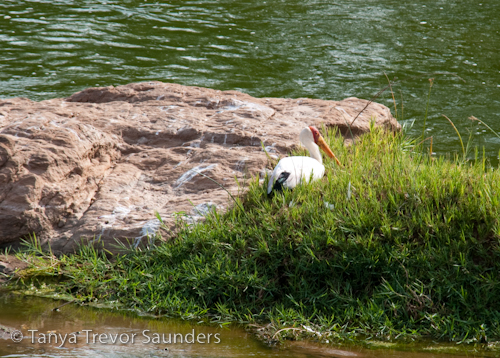
The Quelea continue massing, and seem to be increasing daily in number. Impressive as they are, however, the flocks we are seeing are still tiny compared with the size of flocks these birds sometimes group in – up to several million at a time. Nevertheless, you can tell the Quelea are in the area from the increased number of prey birds, in particular the falcons. I hope you can make out the falcon slightly below and to the right of the center of this photo:
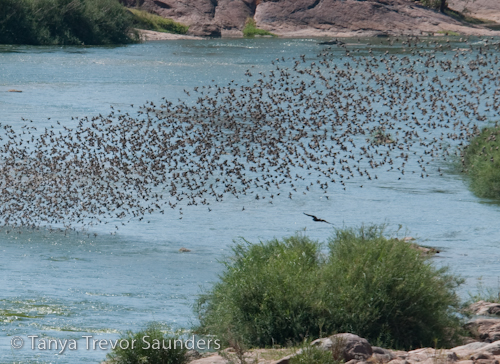
The Marabou Storks, eternal opportunists that they are, are also here, always waiting for a bird to fall in the river and drown, making an easy picking for a stork.
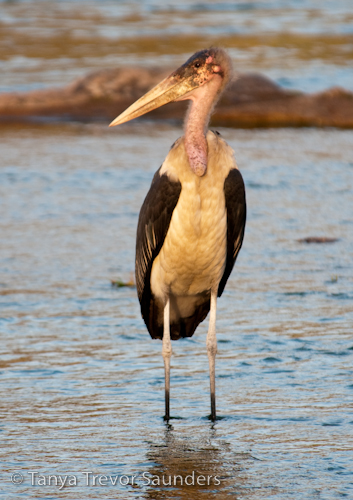
We have a pair of African Spoonbills here at the moment too. They’re not interested in the quelea but rather in the rich pickings of the shallow water in the river, where their spatula-bills scoop up fish, crustaceans, insects, larvae, mollusks and other goodies. These birds hatch with short bills. The spoon shape starts to develop after hatching, and are fully developed by the time they leave the nest.
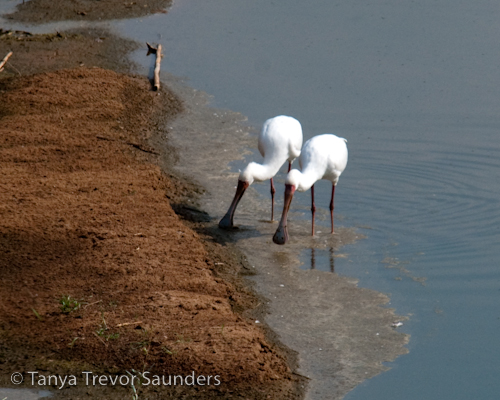
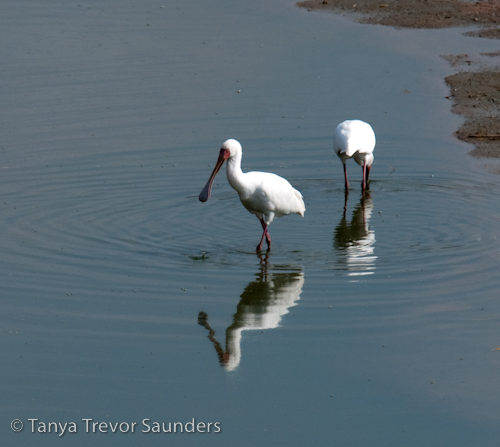
We have bees in 14 hives now! What they are feeding on, I don’t know as there are no flowers in the vicinity, bar a few on the acacia thomasii around our house where they get watered. In one hive, the bees are sharing their abode with some small red beetles that seem to be living in a mud nest at the end of the hive. Neither bees nor beetles seem in the least concerned by their cohabitation:
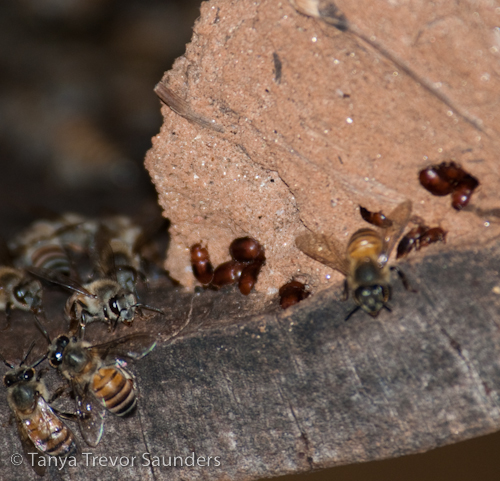
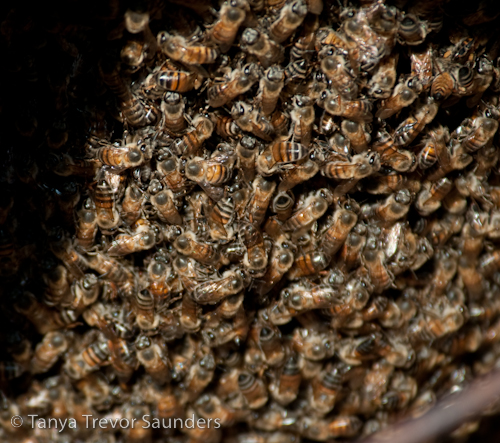
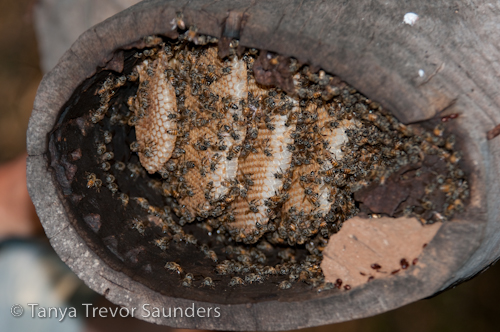
Ian was playing the staunch husband, holding the hive steady to stop it swinging in the wind while I photographed (I love it when he suffers for my art!).
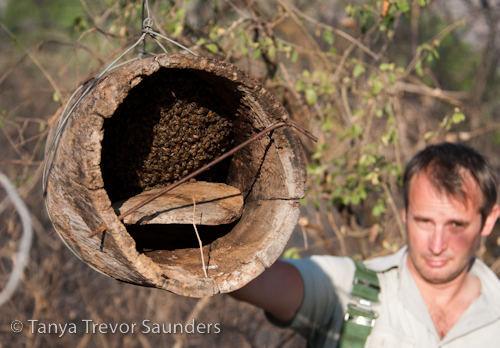
Animals can be so comical. The other day, I was watching the scrum outside the kitchen window that occurs every morning when I feed the birds, monkeys, squirrels and dikdiks. A young monkey was sitting on the ground, picking up as much maize as it could as fast as possible and filling its cheek pouches to bursting point. A squirrel was nearby, doing much the same thing. Suddenly the monkey reached out and slapped the squirrel around the head. Not once, but about six times. The funniest thing was, the squirrel paid absolutely no attention to the monkey’s slaps at all. It just continued stuffing its mouth full of maize. But it really made me laugh. Eventually, the monkey realized it was having no effect at all, and it went back to its maize collecting.
While squirrels seem impervious to monkey-slaps, hyraxes seem impervious to thorns. It’s amazing what animals will go through to get a good feed!
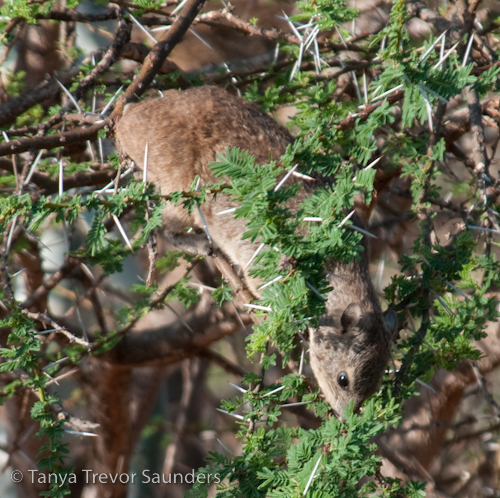
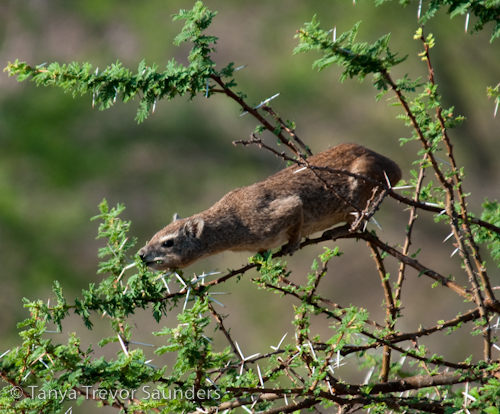
One of our many Bulbuls is looking quite comical too. It’s been molting, and is currently without a tail, looking very much like a Crombec in shape:
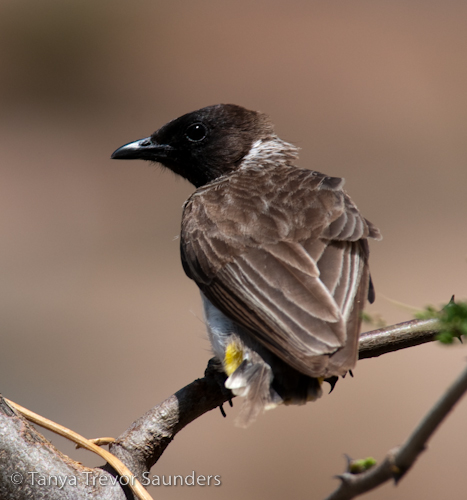
There are at least 25 hippos spending the day in the deep river pool at Hippo Bend. Here are Ian and my Dad on an evening walk, with “our” hippos in the background:
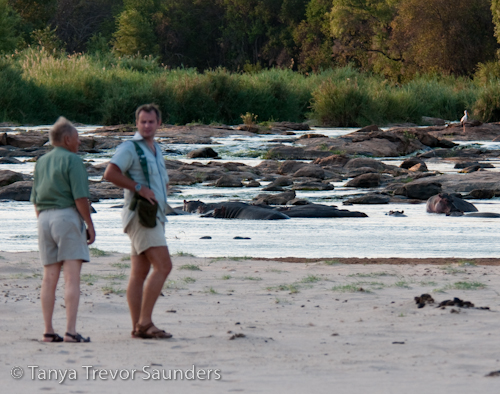
The tracks in the sand in the morning bear testament to the beach below our house becoming a hippo highway at night:
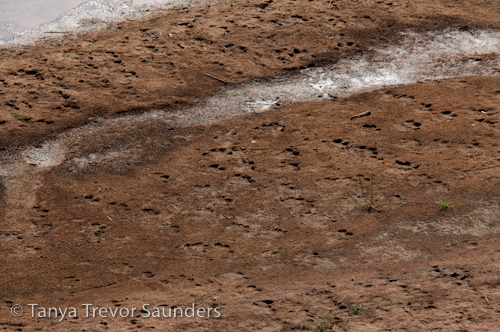
Tsavo is not a bad place for a sundowner. Sometimes Ian and I drive out at last light, to admire the setting sun from the higher ground up behind our land. The impalas don’t seem to mind the intrusion and we welcome their company:
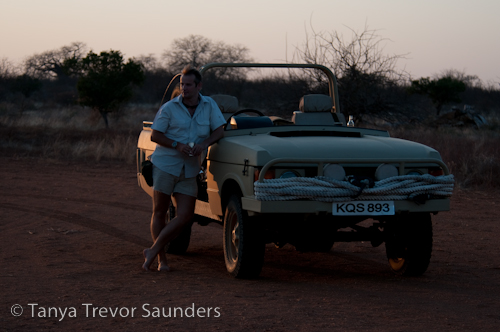
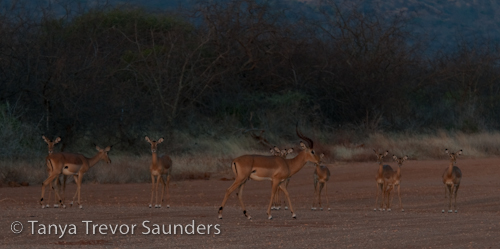
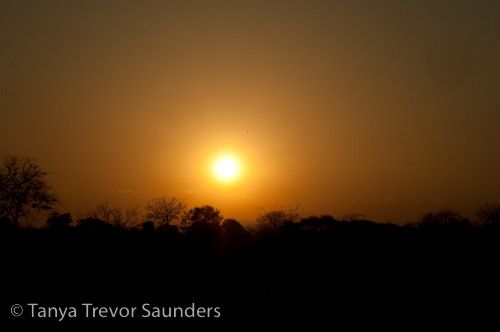





Reader Comments (2)
Great photos (again - you must get bored of hearing it!). Is Ian ok - it looks like he's got a shiner in that photo :D
Ha ha ha - that's what I said too....looking closely at the photo, I think it's a branch which was in front of his face but is very out of focus....it does look like he's been in the wars...but no, no battle stories to tell...